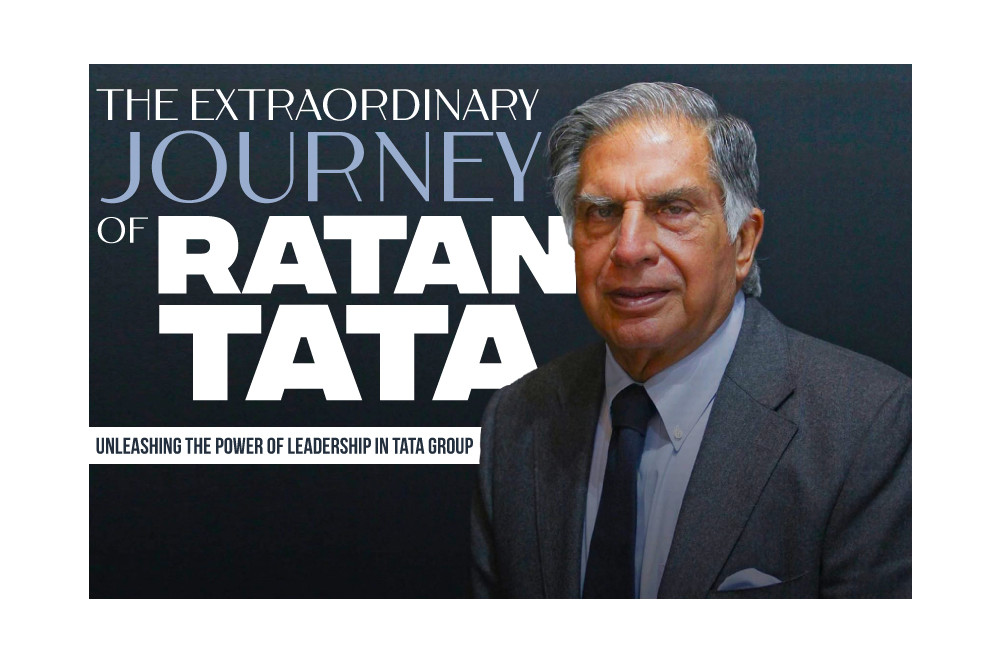Lessons from Notable Leaders: Ratan Tata - Visionary Who Redefined Global Manufacturing
“Ups and downs in life are very important to keep us going. A straight line, even in an ECG, means we’re not alive.”
— Ratan Tata
From revitalizing a 150-year-old conglomerate to pioneering frugal engineering and billion-dollar global acquisitions, Ratan Naval Tata reshaped India’s manufacturing landscape with a rare blend of humility, foresight, and audacity. As Chairman of Tata Sons from 1991 to 2012, he transformed Tata from a largely India-centric industrial group into a global powerhouse, proving that traditional manufacturing giants could innovate, adapt, and lead in the 21st century.
The Leadership Legacy: From Steel to SUVs
Ratan Tata inherited a conglomerate steeped in tradition but struggling to compete globally. His strategy? Aggressive globalization, frugal innovation, and empathy-driven leadership. Here’s how he rewrote the rules:
1. “Bet Big, Even When Others Doubt You”: The Jaguar Land Rover Gamble
The Challenge: By the 2000s, Tata Motors was known for trucks and budget cars, not luxury vehicles. Meanwhile, iconic British brands Jaguar and Land Rover were floundering under Ford’s ownership, hemorrhaging $2.3B annually.
The Move: In 2008, at the height of the global financial crisis, Tata acquired Jaguar Land Rover (JLR) for $2.3B—a move critics called “reckless.” But Tata saw potential: JLR’s engineering heritage paired with Tata’s cost-efficient supply chains and emerging-market growth.
The Result:
-
JLR’s revenue tripled to $28B by 2015, driven by demand in China and new models like the Range Rover Evoque.
-
Tata Motors’ market cap soared from 5B(2008) to 43B (2024), with JLR contributing 80% of profits.
-
Preserved 40,000+ UK jobs, earning Tata a knighthood and global respect.
Key Lesson: Globalization isn’t just about scale—it’s about marrying legacy strengths with new markets.
2. “Innovation Must Serve Humanity”: The Nano Car Experiment
The Challenge: In 2003, Tata witnessed families risking lives on motorcycles during monsoons. He vowed to build a “people’s car” priced at just $2,500—half the cost of India’s cheapest car.
The Move: The Tata Nano, launched in 2009, was a masterpiece of frugal engineering:
-
Used lightweight materials (e.g., sheet metal instead of cast iron).
-
Modular design for easy assembly.
-
Partnered with vendors to cut costs (e.g., single windshield wiper).
The Result:
-
Initial frenzy: 200,000+ orders in 2008.
-
Why It Stumbled: Production delays, safety concerns, and perceived “cheapness” hurt sales. Only 276,000 units sold by 2018.
-
Legacy: Inspired global frugal innovation (e.g., Renault Kwid, GE’s $800 ECG machine). Proved affordability and aspiration could coexist.
Key Lesson: Disruptive ideas demand courage—even “failures” can redefine industries.
3. “Empathy Is the Best ROI”: Worker-Centric Steel Revival
The Challenge: In 2007, Tata Steel acquired Anglo-Dutch giant Corus for $12B—Asia’s largest overseas takeover. But integrating a European workforce with Tata’s ethos seemed impossible.
The Move:
-
No Layoffs: Tata retained all 24,000 Corus employees, despite pressure to cut costs.
-
Trust-Building: Hosted town halls, shared R&D resources, and invested $800M in UK plant upgrades.
-
Sustainability Focus: Slashed Corus’ carbon footprint by 20% within five years.
The Result:
-
Tata Steel became a Top 10 global producer, with Corus mills supplying critical sectors like aerospace.
-
Earned loyalty: UK unions praised Tata as “the most responsible steel owner we’ve known.”
Key Lesson: Manufacturing thrives when you treat workers as partners, not expenses.
Leadership Principles That Built a Legacy
Ratan Tata’s playbook offers timeless insights for manufacturing leaders:
-
Strategic Empathy:
-
“Take the people with you. If they believe in you, they’ll walk on water for you.”
-
Example: Tata’s $1.7B investment in employee upskilling (1991–2012) built a talent pipeline for global expansion.
-
-
Long-Term Patience:
-
JLR took 5+ years to turn profitable, but Tata resisted short-term fixes.
-
Today, JLR leads in electric luxury SUVs with its $19B electrification plan.
-
-
Courage to Cannibalize:
-
Shut down inefficient units (e.g., Tata Motors’ outdated Pune plant) to fund new ventures.
-
The Road Ahead: Lessons for a Turbulent Era
Ratan Tata’s era teaches us that manufacturing isn’t just about machines—it’s about people, purpose, and perseverance. His bets on JLR and the Nano, though contrasting in outcomes, shared a common thread: the audacity to challenge conventions.
As supply chains fragment and automation rises, his human-centric approach—prioritizing worker dignity, customer needs, and patient capital—remains a blueprint for building resilient, future-ready manufacturers.
Ready to increase your OEE, get clearer vision of your shop floor, and predict sustainably?
